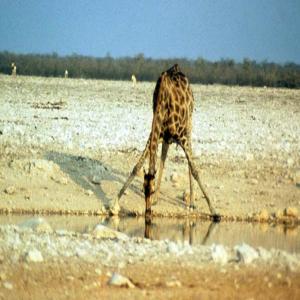
Carbofuran was developed in the 1960s to replace more persistent pesticides such as DDT. Since then it has repeatedly been implicated in the mass mortality of nontarget wildlife, especially avian species. Conservationists worldwide have sought to regulate or ban the use of carbofuran for decades. However, this controversial product remains registered for use in a number of developed and developing nations. Its use in the United States has fueld an ongoing regulatory battle between the US Environmental Protection Agency and various lobby groups. Several significant obstacles, including flawed field study designs, lack of analytical capacity and a dearth of forensic evidence to support anecdotal reports have all contributed to carbofuran's remarkable staying power.
This presentation on carbofuran was made by Ngaio Richards at the Society of Wildlife Forensic Science's first triennial meeting in May 2012. It highlights key points and advances from the recently published book, Carbofuran and Wildlife Poisoning: Global Perspectives and Forensic Approaches.
Ngaio Richards is a Canine Field Specialist with Working Dogs for Conservation. She is a forensic ecologist and conservationist ans has authored numerous papers on wildlife monitoring and conservation.
view more
More Episodes
The WildLife: Ocellated Turkeys, Jon McRoberts
 2010-10-25
2010-10-25
 183
183
 2010-10-25
2010-10-25
 183
183
The WildLife: Financing Wildlife Conservation, Ray Victurine
 2010-10-18
2010-10-18
 596
596
 2010-10-18
2010-10-18
 596
596
The WildLife: Hawaii's Aquarium Trade, Rene Umberger
 2010-10-04
2010-10-04
 407
407
 2010-10-04
2010-10-04
 407
407
The WildLife: Lorises, Anna Nekaris
 2010-09-13
2010-09-13
 247
247
 2010-09-13
2010-09-13
 247
247
The WildLife: Geoduck Trade, Craig Welch
 2010-08-30
2010-08-30
 127
127
 2010-08-30
2010-08-30
 127
127
The WildLife: Wildlife Rescue Centers, Tracy O'Toole
 2010-08-23
2010-08-23
 146
146
 2010-08-23
2010-08-23
 146
146
The WildLife: Elephant Seals, Christine Heinrichs
 2010-08-16
2010-08-16
 147
147
 2010-08-16
2010-08-16
 147
147
The WildLife: Rhino Horn Trade, Rhishja Larson
 2010-08-02
2010-08-02
 729
729
 2010-08-02
2010-08-02
 729
729
The WildLife: Marine Aquarium Trade, Brian Tissot
 2010-07-26
2010-07-26
 234
234
 2010-07-26
2010-07-26
 234
234
The WildLife: Gorillas & Bushmeat Trade, Pierre Fidenci
 2010-07-19
2010-07-19
 73
73
 2010-07-19
2010-07-19
 73
73
The WildLife: Philippine Forest Turtle, Pierre Fidenci
 2010-07-12
2010-07-12
 198
198
 2010-07-12
2010-07-12
 198
198
012345678910111213141516171819
Create your
podcast in
minutes
- Full-featured podcast site
- Unlimited storage and bandwidth
- Comprehensive podcast stats
- Distribute to Apple Podcasts, Spotify, and more
- Make money with your podcast
It is Free
- Privacy Policy
- Cookie Policy
- Terms of Use
- Consent Preferences
- Copyright © 2015-2024 Podbean.com





